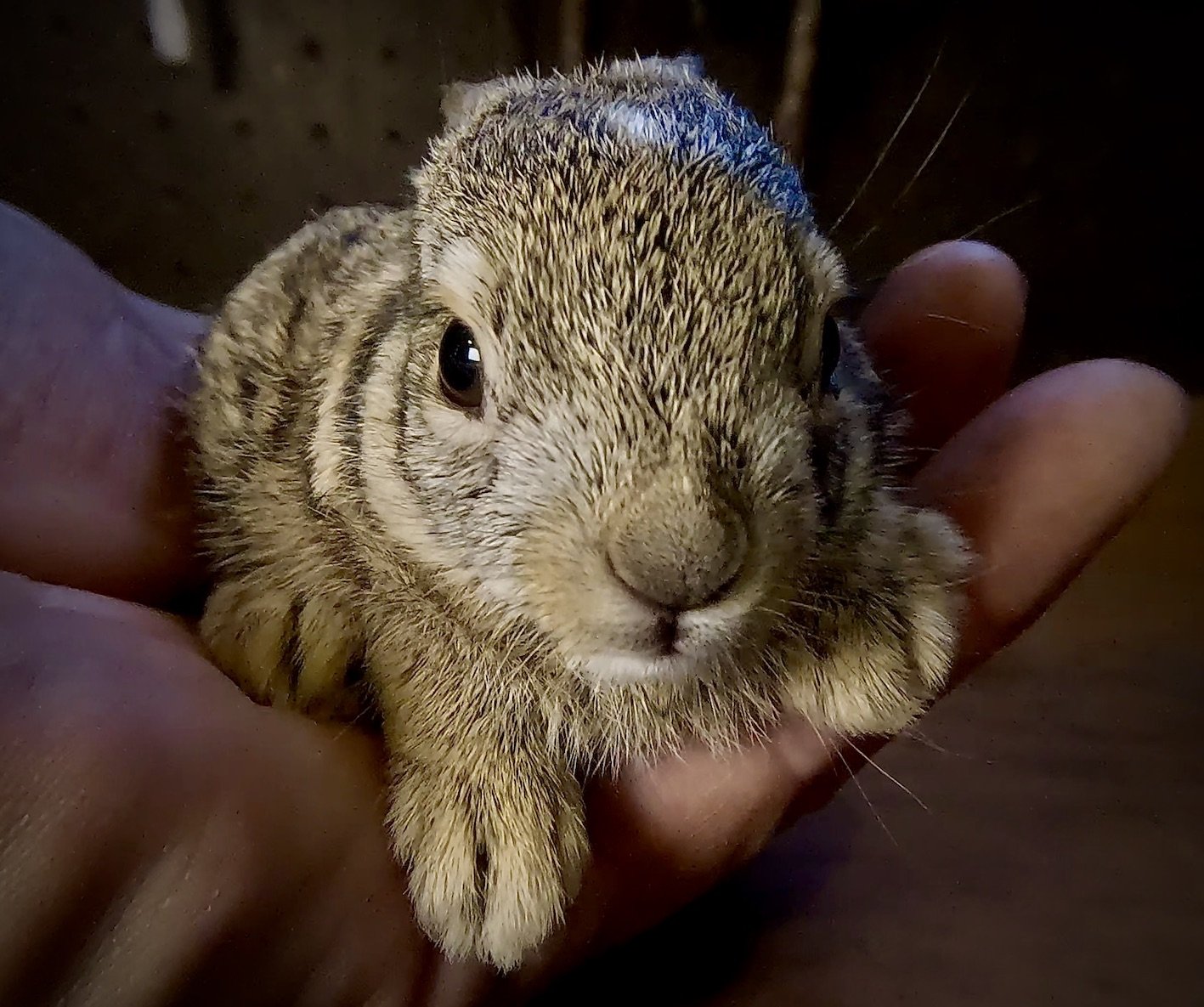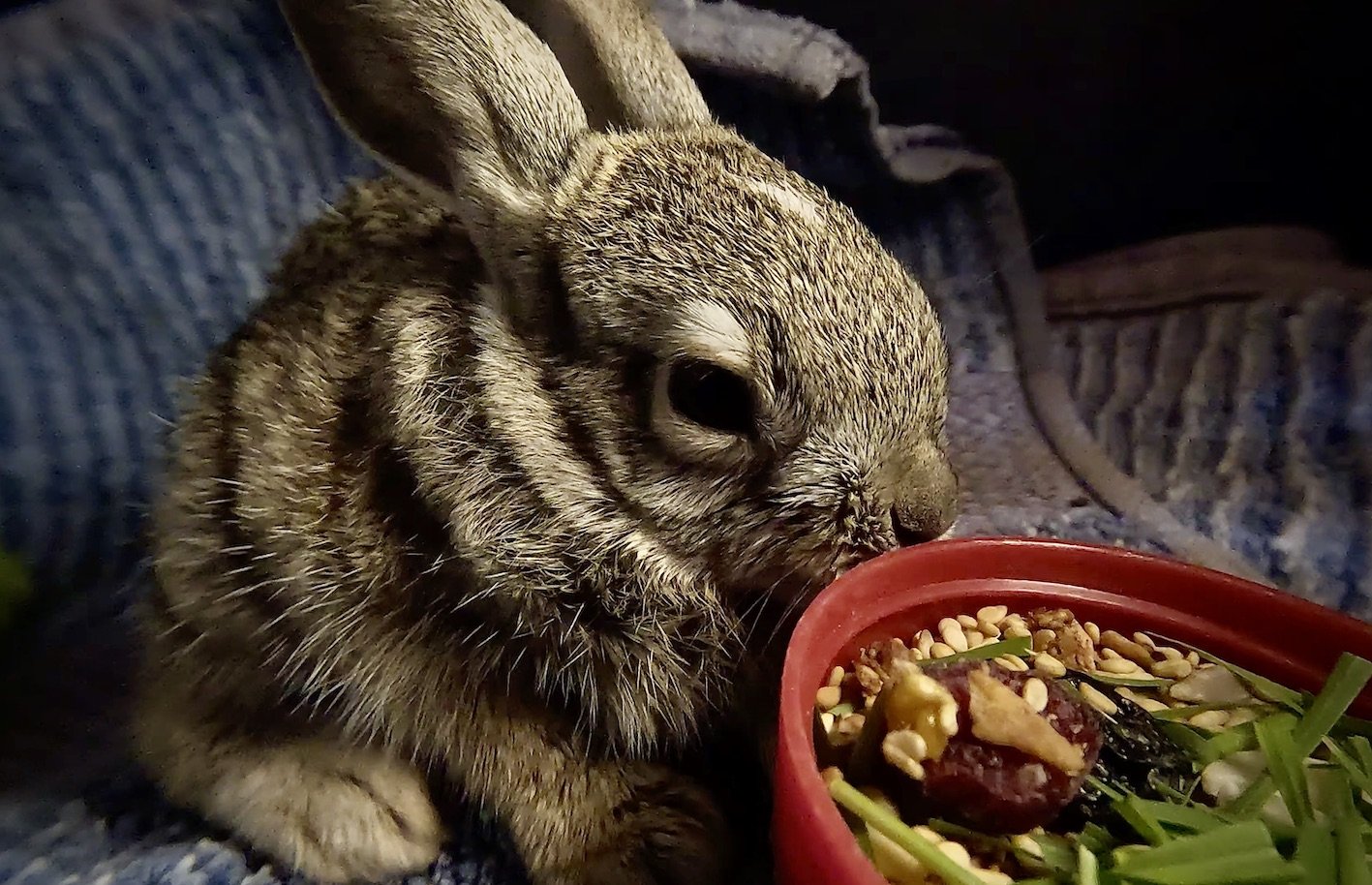Meet Li (short for "liebre" --which means "jackrabbit" in Spanish). Li is a baby jackrabbit and the newest patient at KLM’s wildlife rescue sanctuary.
Road to Recovery
On May 25th we received a call from the Security Office at the Villages of Loreto Bay. They had found a baby jackrabbit in distress by the highway close to the security check. We were very concerned because it was so lethargic and easy for humans to pick up, which usually indicates a serious injury, illness or severe exhaustion. However, we have not identified any injuries and Li is responding to care.
Li drank some goat milk and ate a little alfalfa mixed with bunny pellets. The most important concern is to be careful it does not get overly stressed in its new environment so we bought a young bunny to keep it company. The Li tried to nurse on the new bunny, so we believe Li lost his mother and became weak from a lack of food.
Li continues to enjoy meals of goat milk, organic peas, lettuce and cabbage in tiny amounts. We hope he will make a full recovery so that he can be released.
Li’s New Home
Crafting a jackrabbit home out of tumbleweed.
Recently we learned that jackrabbits live in above-ground nests (not in subterranean burrows, as rabbits do). So, we found a tumbleweed and carved out its center, making a little nest out of it.
We also confirmed that fresh goat milk is an appropriate substitute for momma jackrabbit milk, so we got more of that and warmed it up to the right momma jackrabbit temperature and attempted to feed Li with a syringe.
The little jackrabbit suckled the milk from the syringe immediately. As we watched and listened to him drink, a pattern jumped out at us. The rhythm and the tone of Li suckling the milk was done in such a way as to perfectly match the rhythm and tone of Vivaldi’s Concerto for Mandolin in C Major. Naturally, when we realized this, Erik ran for his video camera to record this miraculous phenomenon. Below is a link to the video.
Li & Vivaldi
More on Jackrabbits
There are 6 species of jackrabbits that live in Mexico.
First things first: Jackrabbits are not rabbits. They’re hares. Both rabbits and hares are members of the mammalian order Lagomorpha (as are pikas). Jackrabbit ranges overlap with that of a number of rabbit species in North America, but they’re pretty easy to tell apart just based on size alone. Depending on the species, jackrabbits typically weigh from 5 to 9 pounds, and can be up to two feet long.
The long legs and large ears of any jackrabbit species are unmistakable. (The desert cottontail also has large ears, but it is a small animal, the size of a typical backyard rabbit).
There are other differences between rabbits and hares. Hares tend to be considerably larger animals. Their babies are born fully furred and are able to scamper around within hours. Rabbits, on the other hand, are born hairless and largely helpless.
Hares do not use burrows like many rabbit species do. They may seek cover in a log. You can often find depressions used by black-tailed jackrabbits dug out under big sagebrush. But they don’t den underground.
Jackrabbits are critters of relatively open country. Think sagebrush flats, deserts and grassy plains. They do need cover, of course, and can be surprisingly tricky to spot, especially during the day. They are quite active at dawn and dusk, and you will often see them darting across the road during the night.
These animals are built for a speedy getaway. They can jump 20 feet in a bound and race away at 30 miles per hour.
Learn More
The above excerpt about jackrabbits is from Cool Green Science - A Field Guide to Jackrabbits. Click the link to learn more.



